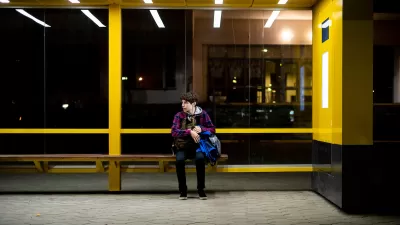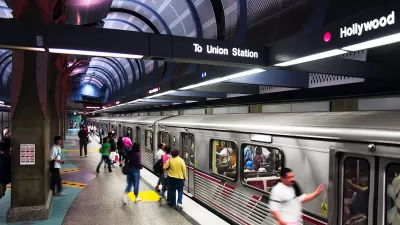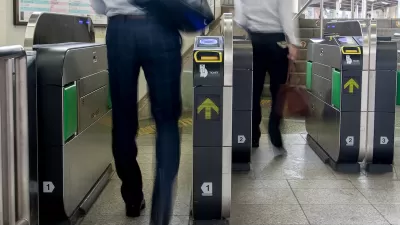Advocates say encouraging community events, vendors, and activity at transit stations can improve public safety without increasing the presence of law enforcement.

A coalition of Los Angeles transit advocates held an ‘activation’ event at the Compton A Line station in an effort to demonstrate how more services and amenities at stations can contribute to public safety and make transit hubs more pleasant and accessible. Joe Linton attended the event and reported on the experience for Streetsblog L.A.
The Alliance for Community Transit “has pushed for treating Metro stations as commons or sanctuaries, mainly through the increased presence of people – from vendors to ambassadors to musicians – as a solution to greater public safety, without increased presence of armed law enforcement.” Co-hosted by Metro, the city of Compton, and County Supervisor Holly Mitchell, the event was one example of how community events can activate transit stations. “It included street vendors, transit ambassadors, wayfinding, an info kiosk, performances, bathrooms, bathroom attendants, and more.”
Unfortunately, those amenities are, on a usual day, a rare sight at L.A. transit stations. “Unlike most transit stops around the world, Metro keeps its rail and BRT (Bus Rapid Transit) stations nearly entirely free of vending and staffing. In theory, the agency is open to ‘improve station amenities,’ but, with very few exceptions, the agency works against vending and other activities by trying to keep its stations as sterile as possible.” Linton notes that while the willingness of officials to come together for one-day events is encouraging, “it is much harder to imagine them changing Metro’s longstanding treatment of stations as anything but commons.”
FULL STORY: Transit Alliance Activates Compton A Line Station

Study: Maui’s Plan to Convert Vacation Rentals to Long-Term Housing Could Cause Nearly $1 Billion Economic Loss
The plan would reduce visitor accommodation by 25,% resulting in 1,900 jobs lost.

North Texas Transit Leaders Tout Benefits of TOD for Growing Region
At a summit focused on transit-oriented development, policymakers discussed how North Texas’ expanded light rail system can serve as a tool for economic growth.

Using Old Oil and Gas Wells for Green Energy Storage
Penn State researchers have found that repurposing abandoned oil and gas wells for geothermal-assisted compressed-air energy storage can boost efficiency, reduce environmental risks, and support clean energy and job transitions.

Private Donations Propel Early Restoration of Palisades Playground
Los Angeles has secured over $1.3 million in private funding to restore the Pacific Palisades playground months ahead of schedule, creating a modern, accessible space that supports community healing after recent wildfires.

From Blight to Benefit: Early Results From California’s Equitable Cleanup Program
The Equitable Community Revitalization Grant (ECRG) program is reshaping brownfield redevelopment by prioritizing projects in low-income and environmental justice communities, emphasizing equity, transparency, and community benefits.

Planting Relief: Tackling Las Vegas Heat One Tree at a Time
Nevada Plants, a Las Vegas-based nonprofit, is combating the city’s extreme urban heat by giving away trees to residents in underserved neighborhoods, promoting shade, sustainability, and community health.
Urban Design for Planners 1: Software Tools
This six-course series explores essential urban design concepts using open source software and equips planners with the tools they need to participate fully in the urban design process.
Planning for Universal Design
Learn the tools for implementing Universal Design in planning regulations.
Ascent Environmental
Borough of Carlisle
Institute for Housing and Urban Development Studies (IHS)
City of Grandview
Harvard GSD Executive Education
Toledo-Lucas County Plan Commissions
Salt Lake City
NYU Wagner Graduate School of Public Service





























